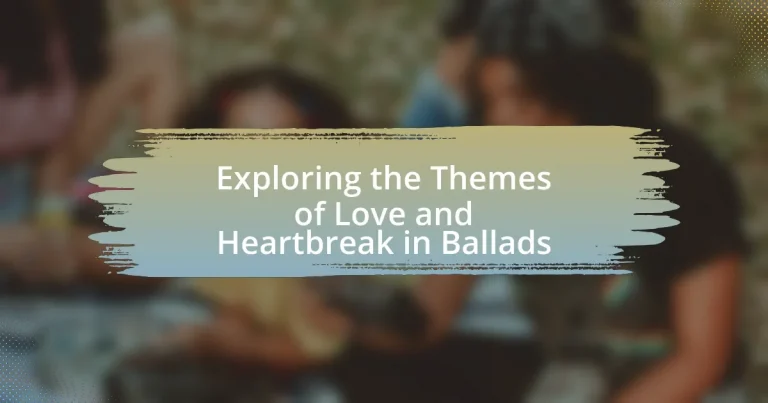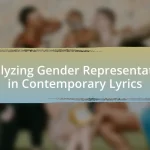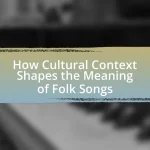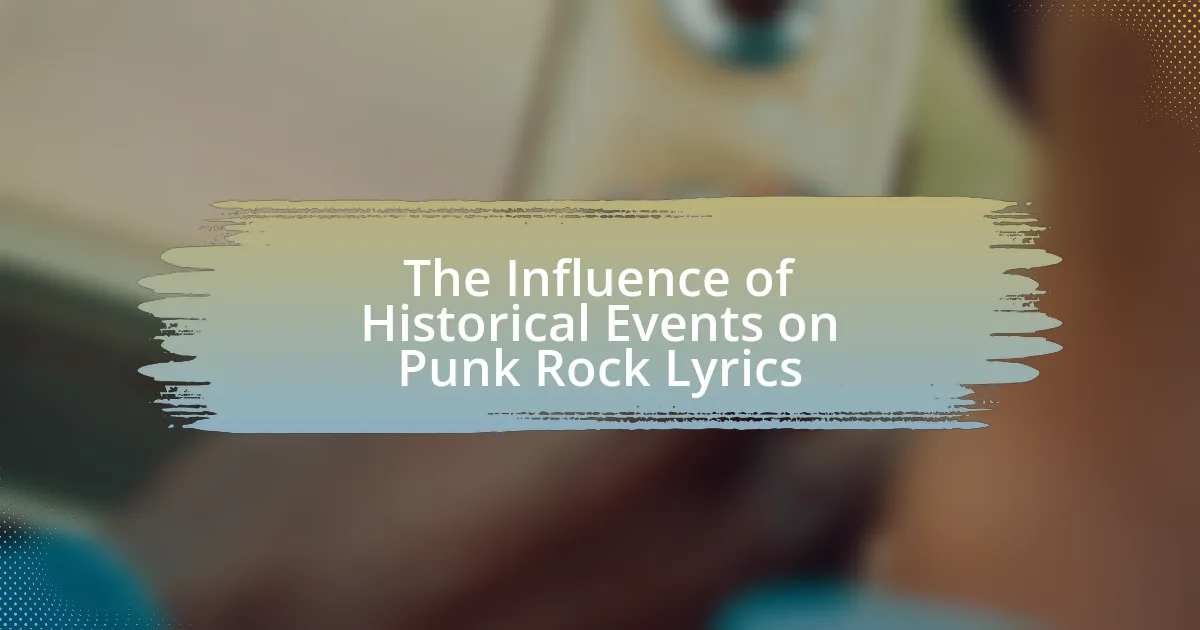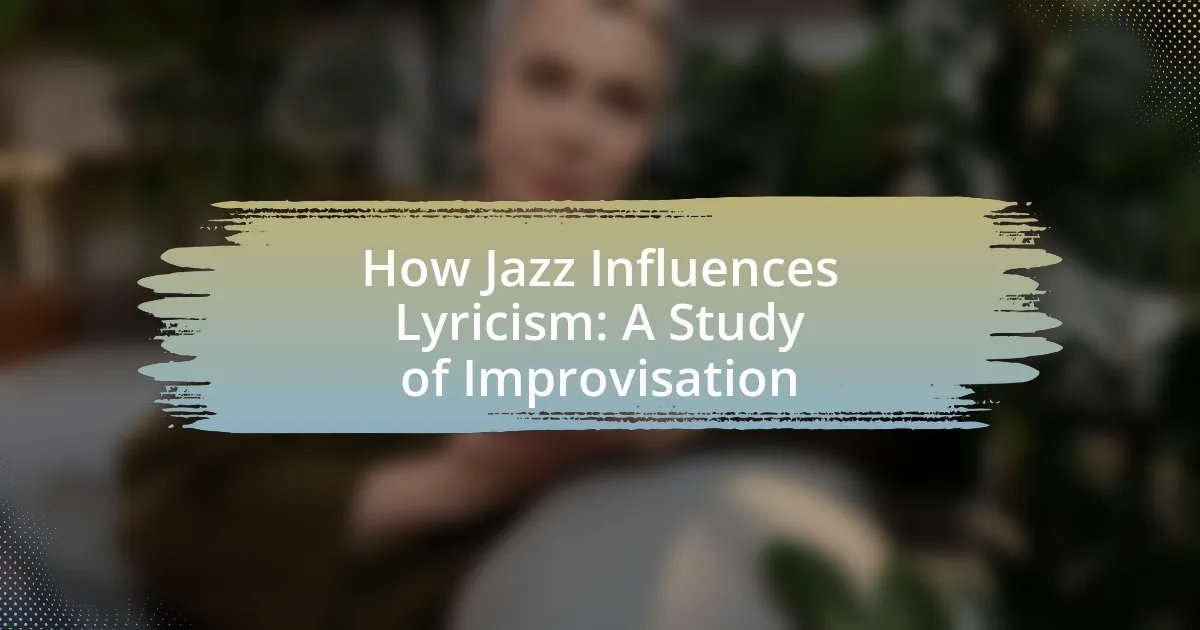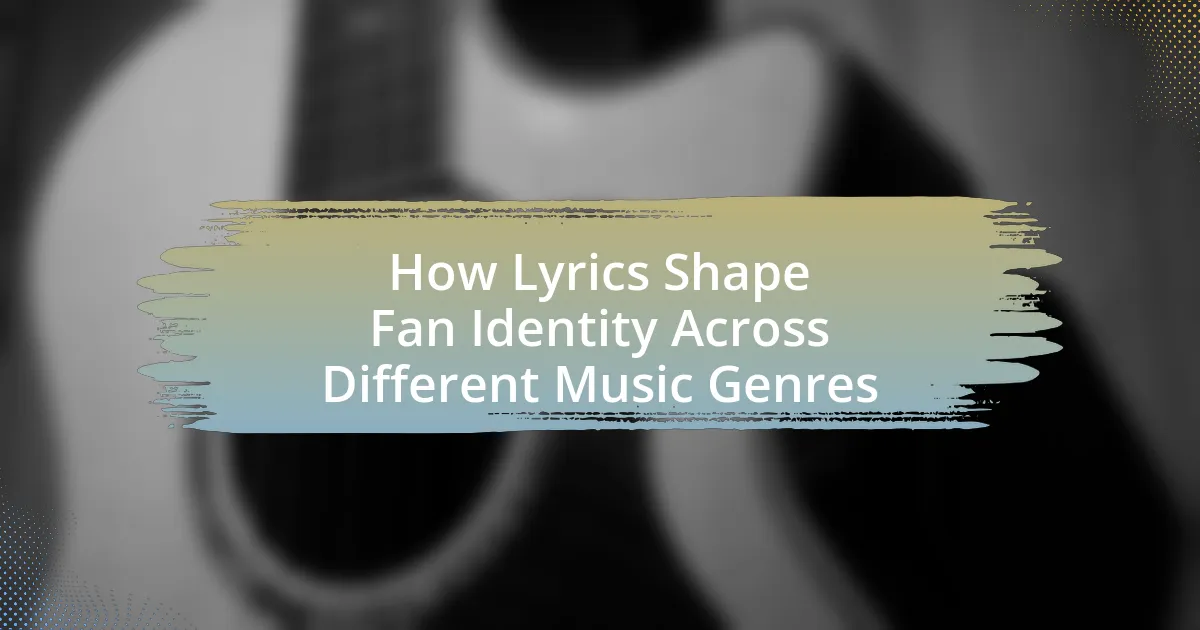The article explores the themes of love and heartbreak in ballads, highlighting key elements such as unrequited love, emotional turmoil, and the narrative techniques used to convey these experiences. It examines how ballads express love through storytelling, imagery, and literary devices, while also addressing the portrayal of heartbreak and its emotional implications. The article discusses various types of ballads, including narrative and lyrical forms, and analyzes how historical context influences the representation of these themes across cultures. Additionally, it provides insights into contemporary ballads and offers practical tips for deeper engagement with the themes of love and heartbreak.
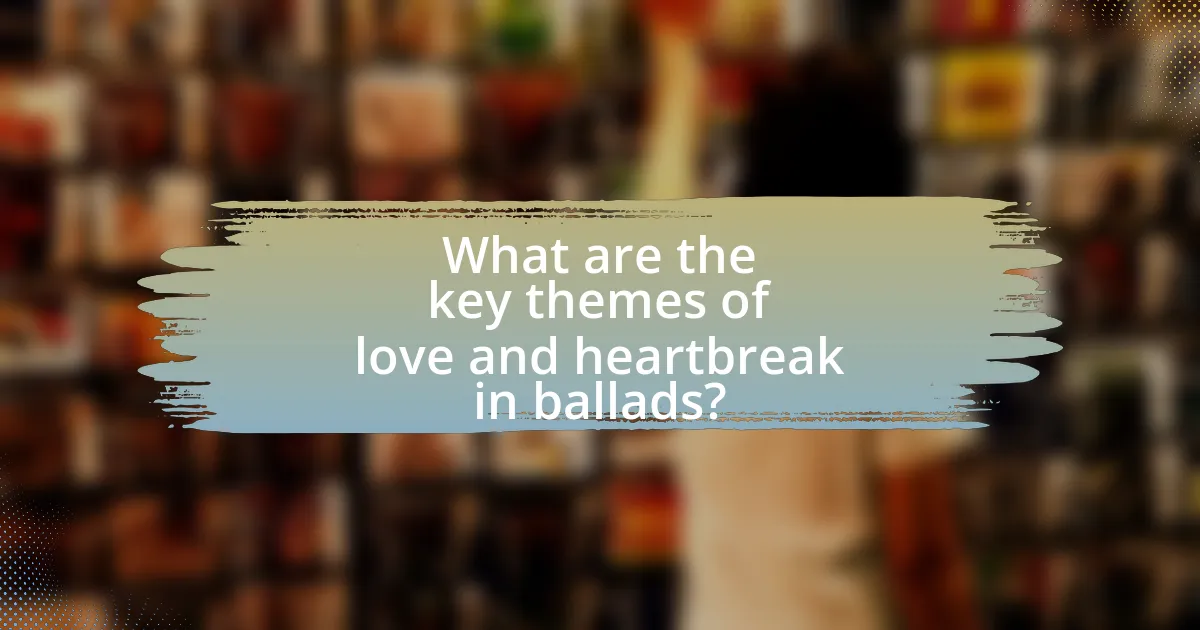
What are the key themes of love and heartbreak in ballads?
The key themes of love and heartbreak in ballads include unrequited love, loss, longing, and emotional turmoil. Ballads often depict the intense feelings associated with love, showcasing the joy and beauty of romantic connections, while simultaneously exploring the pain and sorrow that arise from heartbreak. For instance, traditional ballads frequently narrate stories of lovers separated by circumstances, such as death or betrayal, emphasizing the emotional struggle and yearning for reconciliation. Historical examples, like “Barbara Allen,” illustrate how love can lead to despair when it is not reciprocated, highlighting the duality of love’s joy and heartbreak.
How do ballads express the theme of love?
Ballads express the theme of love through narrative storytelling that captures emotional experiences and relationships. These poetic forms often depict romantic love, unrequited affection, or the pain of separation, using vivid imagery and relatable characters to evoke strong feelings. For instance, traditional ballads frequently feature a lover’s lament or a celebration of love’s joys, illustrating the complexities of human emotions. Historical examples, such as “Barbara Allen,” showcase the consequences of love and loss, reinforcing the theme through relatable scenarios and emotional depth.
What literary devices are used to convey love in ballads?
Ballads convey love through various literary devices, including imagery, metaphor, and repetition. Imagery creates vivid pictures of romantic moments, allowing readers to visualize the emotions involved. For example, descriptions of nature, such as blooming flowers or starry nights, often symbolize love’s beauty. Metaphors compare love to tangible experiences, enhancing emotional depth; for instance, love may be likened to a journey or a flame, illustrating its intensity and challenges. Repetition emphasizes key themes and emotions, reinforcing the significance of love in the narrative. These devices work together to evoke feelings and create a lasting impact on the audience.
How does the portrayal of love differ across various ballads?
The portrayal of love differs across various ballads primarily in its emotional depth and thematic focus. For instance, some ballads depict love as an idealized and romantic force, emphasizing passion and devotion, while others present love as a source of pain and heartbreak, highlighting betrayal and loss. Historical examples include “The Water Is Wide,” which reflects on unfulfilled love and longing, contrasting with “Barbara Allen,” where love leads to tragic consequences. These variations illustrate how cultural contexts and narrative styles shape the representation of love in ballads, influencing listeners’ emotional responses and interpretations.
What role does heartbreak play in ballads?
Heartbreak serves as a central theme in ballads, often driving the narrative and emotional depth of the song. Ballads frequently depict the pain and sorrow associated with lost love, allowing listeners to connect with the universal experience of heartbreak. For instance, traditional ballads like “Barbara Allen” illustrate the consequences of unrequited love and the resulting grief, showcasing how heartbreak can lead to tragic outcomes. This emotional resonance is a key reason why ballads remain impactful and relatable across generations, as they encapsulate the profound feelings associated with love and loss.
How is heartbreak depicted in the narratives of ballads?
Heartbreak in the narratives of ballads is depicted through themes of loss, longing, and emotional turmoil. Ballads often portray characters experiencing profound sorrow due to unrequited love, betrayal, or the death of a beloved, illustrating the depth of their emotional pain. For example, traditional ballads like “Barbara Allen” highlight the tragic consequences of love lost, where the protagonist’s grief leads to their demise. This narrative structure emphasizes the intensity of heartbreak, often culminating in a poignant resolution that reinforces the theme of enduring sorrow. The use of vivid imagery and emotional language in ballads serves to evoke empathy from the audience, making the experience of heartbreak relatable and impactful.
What emotions are commonly associated with heartbreak in ballads?
Heartbreak in ballads is commonly associated with emotions such as sorrow, longing, despair, and nostalgia. These emotions are often expressed through lyrical themes that depict loss and unfulfilled love, creating a poignant atmosphere. For instance, research indicates that ballads frequently utilize imagery and metaphors to convey the depth of emotional pain experienced during heartbreak, reinforcing the listener’s connection to the feelings of sadness and yearning.
Why are love and heartbreak significant themes in ballads?
Love and heartbreak are significant themes in ballads because they resonate deeply with human emotions and experiences. These themes capture the complexities of relationships, illustrating both the joy of love and the pain of loss, which are universal feelings that audiences can relate to. Historical evidence shows that ballads have been used for centuries to convey personal stories and societal issues, with love and heartbreak often serving as central narratives. For instance, traditional ballads like “Barbara Allen” and “The Water Is Wide” highlight the emotional turmoil associated with love and separation, reinforcing their importance in this musical genre.
How do these themes resonate with audiences across cultures?
Themes of love and heartbreak in ballads resonate with audiences across cultures due to their universal emotional experiences. Love and heartbreak are fundamental human emotions that transcend cultural boundaries, allowing individuals from diverse backgrounds to connect with the narratives presented in ballads. For instance, studies show that songs expressing love and loss evoke similar emotional responses globally, as evidenced by research conducted by the University of Cambridge, which found that emotional music can elicit comparable feelings regardless of cultural context. This shared emotional landscape enables ballads to serve as a medium for cultural exchange, fostering empathy and understanding among listeners worldwide.
What historical context influences the themes of love and heartbreak in ballads?
The historical context that influences the themes of love and heartbreak in ballads includes societal norms, cultural practices, and historical events that shape human relationships. For instance, during the medieval period, courtly love and chivalry significantly impacted ballads, emphasizing unattainable love and the pain of separation. Additionally, the rise of romanticism in the 18th and 19th centuries brought a focus on individual emotion and personal experience, further embedding themes of love and heartbreak in ballads. The impact of wars, such as the American Civil War, also contributed to the themes, as many ballads emerged from the experiences of loss and longing during times of conflict. These historical influences provide a rich backdrop for understanding the emotional depth found in ballads.
How do ballads transition between love and heartbreak?
Ballads transition between love and heartbreak through narrative shifts that depict the evolution of emotions. These musical forms often start with expressions of deep affection, characterized by vivid imagery and romantic themes, which establish a sense of joy and connection. As the narrative progresses, ballads introduce conflict or loss, utilizing poignant language and melancholic melodies to convey the pain of separation or betrayal. This structural contrast effectively mirrors the emotional journey from love to heartbreak, allowing listeners to experience the depth of both feelings. Historical examples, such as “The Water Is Wide,” illustrate this transition by juxtaposing the beauty of love with the sorrow of unfulfilled desires, reinforcing the thematic complexity inherent in ballads.
What techniques do ballad writers use to shift from love to heartbreak?
Ballad writers use techniques such as contrasting imagery, emotional shifts, and narrative progression to effectively transition from love to heartbreak. Contrasting imagery highlights the beauty of love against the pain of loss, creating a stark emotional juxtaposition. Emotional shifts are often conveyed through changes in tone and diction, moving from romantic language to sorrowful expressions. Narrative progression typically involves a storyline that evolves from a joyful beginning to a tragic conclusion, allowing the audience to experience the full arc of the relationship. These techniques are evident in classic ballads, where the initial celebration of love is followed by a poignant depiction of heartbreak, reinforcing the emotional impact on the listener.
How does the structure of a ballad facilitate this transition?
The structure of a ballad facilitates the transition between themes of love and heartbreak through its use of a narrative format and repetitive refrains. This narrative format allows for storytelling that captures emotional shifts, while the repetitive refrains emphasize key emotional moments, reinforcing the impact of love and subsequent heartbreak. For example, traditional ballads often employ a simple ABAB rhyme scheme and consistent meter, which create a rhythmic flow that enhances the emotional resonance of the lyrics, making the transition between joy and sorrow more poignant and relatable to the audience.
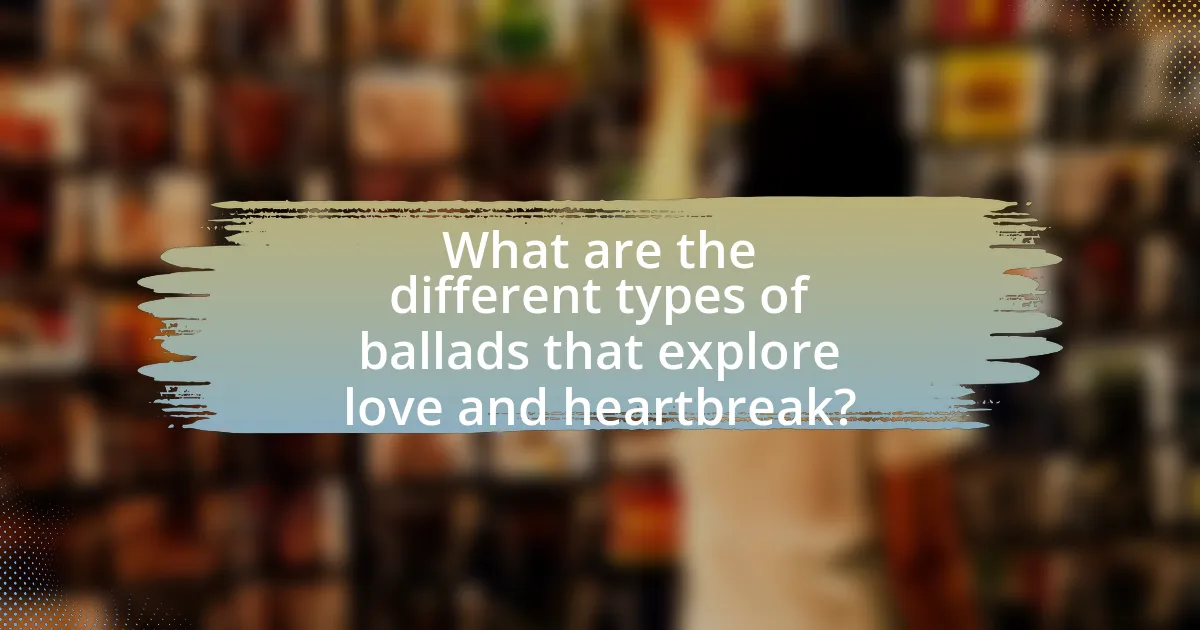
What are the different types of ballads that explore love and heartbreak?
The different types of ballads that explore love and heartbreak include narrative ballads, lyrical ballads, and folk ballads. Narrative ballads tell a story of love or heartbreak, often featuring a dramatic plot and characters, such as in “The Ballad of Lucy Jordan,” which reflects on lost love and regret. Lyrical ballads focus on personal emotions and feelings, exemplified by “She Walks in Beauty” by Lord Byron, which expresses admiration and longing. Folk ballads, often passed down through oral tradition, capture the essence of love and heartbreak in cultural contexts, like “Barbara Allen,” which tells a tale of unrequited love and sorrow. These types of ballads effectively convey the complexities of love and heartbreak through their distinct storytelling methods.
What are narrative ballads and how do they depict love and heartbreak?
Narrative ballads are a form of poetry that tells a story, often focusing on themes of love and heartbreak. These ballads typically feature a simple rhyme scheme and a musical quality, making them accessible and memorable. They depict love through romantic encounters, deep emotional connections, and the joys of relationships, while heartbreak is illustrated through loss, betrayal, and the pain of separation. For example, traditional ballads like “Barbara Allen” convey the sorrow of unrequited love and the tragic consequences of emotional turmoil. The storytelling aspect allows listeners to engage with the characters’ experiences, making the themes of love and heartbreak resonate deeply.
What are some famous examples of narrative ballads focused on these themes?
Famous examples of narrative ballads focused on themes of love and heartbreak include “Barbara Allen,” “The Ballad of Lucy Jordan,” and “Love is a Battlefield.” “Barbara Allen,” a traditional English ballad, tells the story of unrequited love and the tragic consequences that follow. “The Ballad of Lucy Jordan,” written by Shel Silverstein, explores themes of disillusionment and lost love. “Love is a Battlefield,” performed by Pat Benatar, addresses the struggles and emotional turmoil associated with romantic relationships. These ballads effectively capture the essence of love and heartbreak through their storytelling and lyrical depth.
How do narrative ballads differ from lyrical ballads in their treatment of love and heartbreak?
Narrative ballads differ from lyrical ballads in their treatment of love and heartbreak by focusing on storytelling and plot development, while lyrical ballads emphasize personal emotion and introspection. Narrative ballads often depict love and heartbreak through a sequence of events involving characters and their experiences, illustrating the consequences of love in a broader context. For example, traditional narrative ballads like “The Ballad of Sir Patrick Spens” convey themes of loss and tragedy through a narrative arc. In contrast, lyrical ballads, such as those by William Wordsworth, prioritize the emotional response of the speaker, exploring the inner feelings associated with love and heartbreak, often in a more subjective and reflective manner. This distinction highlights how narrative ballads engage with love and heartbreak through external actions and events, while lyrical ballads delve into the internal emotional landscape of the individual.
What are lyrical ballads and what themes do they explore?
Lyrical ballads are a genre of poetry that combines lyrical expression with narrative elements, often focusing on the experiences of common people. This form was popularized by William Wordsworth and Samuel Taylor Coleridge in their 1798 publication “Lyrical Ballads,” which emphasized emotion, nature, and the human experience. The themes explored in lyrical ballads include love, heartbreak, nature, and the complexities of human emotions, reflecting the Romantic era’s focus on individual feelings and the beauty of the natural world. For instance, Wordsworth’s poems often delve into the profound connections between love and nature, illustrating how personal relationships can evoke deep emotional responses.
How do lyrical ballads convey personal emotions related to love and heartbreak?
Lyrical ballads convey personal emotions related to love and heartbreak through their use of vivid imagery, emotional language, and relatable narratives. These elements allow poets to express deep feelings and experiences associated with romantic relationships, often highlighting the intensity of love and the pain of loss. For example, William Wordsworth and Samuel Taylor Coleridge, in their seminal work “Lyrical Ballads,” employed simple language and everyday experiences to evoke strong emotional responses, making the themes of love and heartbreak accessible to readers. The ballads often feature characters who undergo emotional turmoil, reflecting the complexities of human relationships, thereby resonating with audiences on a personal level.
What are the characteristics that define lyrical ballads in this context?
Lyrical ballads are characterized by their focus on emotional expression, simplicity of language, and connection to nature. These poems often explore themes of love and heartbreak, using everyday speech to convey deep feelings, making them accessible to a wide audience. The use of vivid imagery and personal reflection enhances the emotional impact, allowing readers to connect with the experiences depicted. Historically, the movement was popularized by poets like William Wordsworth and Samuel Taylor Coleridge, who emphasized the importance of genuine emotion and the beauty of the natural world in their works.
What are some contemporary ballads that address love and heartbreak?
Contemporary ballads that address love and heartbreak include “Someone Like You” by Adele, “Back to December” by Taylor Swift, and “All I Want” by Kodaline. These songs explore themes of lost love and emotional pain, resonating with listeners through their poignant lyrics and melodies. For instance, Adele’s “Someone Like You” reflects on the sorrow of moving on after a relationship, while Taylor Swift’s “Back to December” expresses regret and longing for a past love. Kodaline’s “All I Want” captures the essence of heartbreak and yearning, making these ballads significant in the contemporary music landscape.
How do modern ballads reflect current societal views on love and heartbreak?
Modern ballads reflect current societal views on love and heartbreak by addressing themes of vulnerability, emotional honesty, and the complexities of relationships. These songs often depict love as multifaceted, showcasing both the joy and pain associated with romantic connections. For instance, artists like Adele and Ed Sheeran explore heartbreak through personal narratives that resonate with listeners, illustrating the emotional turmoil and healing processes involved. Additionally, the prevalence of social media in modern ballads highlights how technology influences relationships, emphasizing themes of distance and connection. This alignment with contemporary experiences demonstrates how modern ballads serve as a mirror to society’s evolving understanding of love and heartbreak.
What influences have shaped contemporary ballads in relation to these themes?
Contemporary ballads have been shaped by various influences, including cultural shifts, technological advancements, and the blending of musical genres. Cultural shifts, particularly the rise of individualism and emotional expression in society, have led to a greater focus on personal narratives in ballads, emphasizing themes of love and heartbreak. Technological advancements, such as the internet and social media, have facilitated the rapid sharing of music and ideas, allowing artists to draw inspiration from diverse sources and reach wider audiences. Additionally, the blending of genres, such as pop, folk, and hip-hop, has introduced new stylistic elements and lyrical approaches, enriching the storytelling aspect of ballads. These influences collectively contribute to the evolution of contemporary ballads, making them more relatable and reflective of modern experiences.
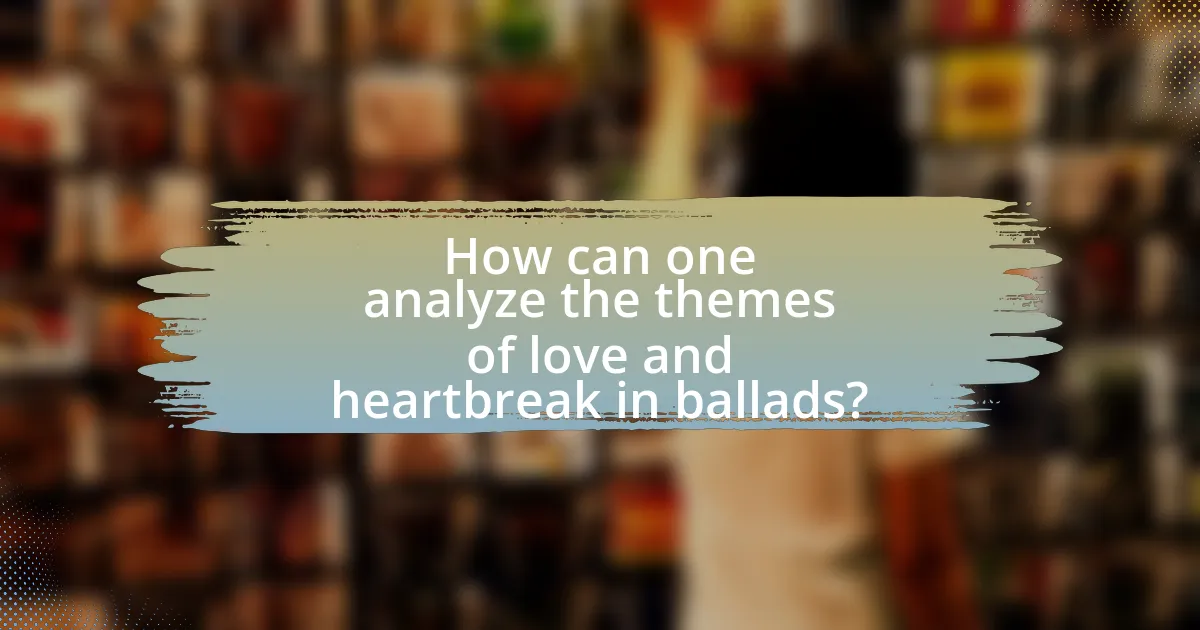
How can one analyze the themes of love and heartbreak in ballads?
One can analyze the themes of love and heartbreak in ballads by examining the lyrical content, narrative structure, and emotional tone of the songs. Ballads often tell stories of romantic relationships, highlighting the progression from love to heartbreak through vivid imagery and emotional language. For instance, the use of metaphors and similes can reveal deeper feelings associated with love, while contrasting imagery may illustrate the pain of loss. Historical examples, such as “Barbara Allen,” showcase how ballads encapsulate the emotional turmoil of unrequited love and betrayal, providing insight into societal attitudes towards love and heartbreak during their time. Analyzing these elements allows for a comprehensive understanding of how ballads reflect and evoke the complexities of human emotions related to love and heartbreak.
What analytical frameworks can be applied to study ballads?
Various analytical frameworks can be applied to study ballads, including structural analysis, thematic analysis, and historical-contextual analysis. Structural analysis focuses on the form and organization of ballads, examining elements such as meter, rhyme scheme, and narrative structure, which are crucial for understanding how these elements contribute to the overall impact of themes like love and heartbreak. Thematic analysis allows researchers to identify and interpret recurring motifs and symbols within ballads, providing insights into cultural attitudes towards love and emotional pain. Historical-contextual analysis situates ballads within their socio-historical background, revealing how societal norms and events influence the portrayal of romantic relationships and emotional struggles in the lyrics. These frameworks collectively enhance the understanding of ballads as complex cultural artifacts that reflect human experiences of love and heartbreak.
How does a thematic analysis enhance understanding of love and heartbreak in ballads?
Thematic analysis enhances understanding of love and heartbreak in ballads by systematically identifying and interpreting recurring themes that reflect emotional experiences. This analytical approach allows researchers and audiences to uncover deeper meanings behind the lyrics, revealing how love and heartbreak are portrayed through various narrative techniques, symbols, and emotional expressions. For instance, a thematic analysis may highlight the contrast between joy and sorrow in love stories, illustrating how ballads often encapsulate the complexity of human emotions. By examining specific themes such as longing, loss, and reconciliation, thematic analysis provides insights into cultural attitudes towards love and heartbreak, as evidenced by the prevalence of these themes across different historical periods and musical traditions.
What role does historical context play in the analysis of ballads?
Historical context is crucial in the analysis of ballads as it provides insight into the societal norms, values, and events that shape the themes and narratives within these songs. For instance, ballads often reflect the emotional experiences of love and heartbreak that resonate with specific historical moments, such as wars or social upheavals, influencing the way these themes are expressed. An example is the ballads from the 19th century, which often addressed the impact of industrialization on personal relationships, illustrating how historical changes directly inform the emotional content and storytelling techniques used in the genre.
What are some common interpretations of love and heartbreak in ballads?
Common interpretations of love and heartbreak in ballads often revolve around themes of longing, loss, and emotional turmoil. Ballads frequently depict love as an idealized yet fragile state, where deep affection can lead to profound sorrow when relationships falter. For instance, many traditional ballads illustrate the pain of unrequited love or the heartache that follows betrayal, emphasizing the emotional depth and vulnerability associated with romantic connections. Historical examples include “Barbara Allen,” which portrays a love that ends in tragedy, highlighting the consequences of miscommunication and regret. Such narratives resonate universally, reflecting the complexities of human emotions tied to love and heartbreak.
How do different cultures interpret the themes of love and heartbreak in their ballads?
Different cultures interpret the themes of love and heartbreak in their ballads through unique narratives and emotional expressions that reflect their societal values and historical contexts. For instance, in Spanish flamenco ballads, love is often portrayed as passionate yet tumultuous, emphasizing deep emotional suffering, which aligns with the cultural significance of intense personal experiences. In contrast, traditional Irish ballads frequently depict love as a source of longing and nostalgia, often highlighting themes of loss and separation, which resonate with Ireland’s historical struggles and diaspora. Similarly, in Indian classical music, love and heartbreak are expressed through intricate poetic forms, where the pain of separation is often idealized, reflecting the cultural reverence for romantic devotion. These variations illustrate how cultural backgrounds shape the portrayal of love and heartbreak, making ballads a rich medium for exploring human emotions across different societies.
What are the psychological implications of these themes in ballads?
The psychological implications of themes in ballads, particularly those of love and heartbreak, include emotional catharsis, identity formation, and social bonding. These themes often evoke strong emotional responses, allowing listeners to process their own feelings of love and loss, which can lead to a sense of relief and understanding. Research indicates that engaging with such narratives can facilitate emotional regulation and enhance empathy, as individuals relate their experiences to the characters in the ballads. Furthermore, the communal aspect of sharing ballads fosters social connections, reinforcing group identity and collective memory, which is crucial for psychological well-being.
What practical tips can enhance the appreciation of love and heartbreak in ballads?
To enhance the appreciation of love and heartbreak in ballads, actively engage with the lyrics by analyzing their emotional depth and storytelling techniques. This involves closely reading the lyrics to identify themes, metaphors, and emotional expressions that convey the complexities of love and heartbreak. For instance, understanding the historical context of a ballad can provide insights into the societal norms and personal experiences that shape the narrative. Additionally, listening to various interpretations of the ballad can reveal different emotional nuances, as artists often bring their own experiences and feelings into their performances. Engaging with discussions or analyses from music scholars can further deepen appreciation by highlighting the cultural significance and artistic techniques used in ballads.
How can listeners engage more deeply with the themes in ballads?
Listeners can engage more deeply with the themes in ballads by actively analyzing the lyrics and reflecting on their emotional resonance. This engagement can be enhanced by understanding the historical and cultural context of the ballads, which often convey universal themes of love and heartbreak. For instance, many traditional ballads originate from specific regions and times, providing insight into the societal norms and personal experiences of those eras. By exploring these contexts, listeners can connect their own experiences with the narratives presented in the ballads, leading to a more profound appreciation of the themes.
What resources are available for further exploration of love and heartbreak in ballads?
Resources for further exploration of love and heartbreak in ballads include academic journals, books, and online databases. Scholarly articles such as “The Ballad as a Form of Emotional Expression” published in the Journal of Folklore Research provide in-depth analysis of emotional themes in ballads. Books like “The Ballad: A Study in the History of English Literature” by John W. Allen offer historical context and thematic exploration. Online platforms such as JSTOR and Project MUSE host a variety of research papers and articles focused on ballads, allowing for comprehensive study of love and heartbreak themes.
